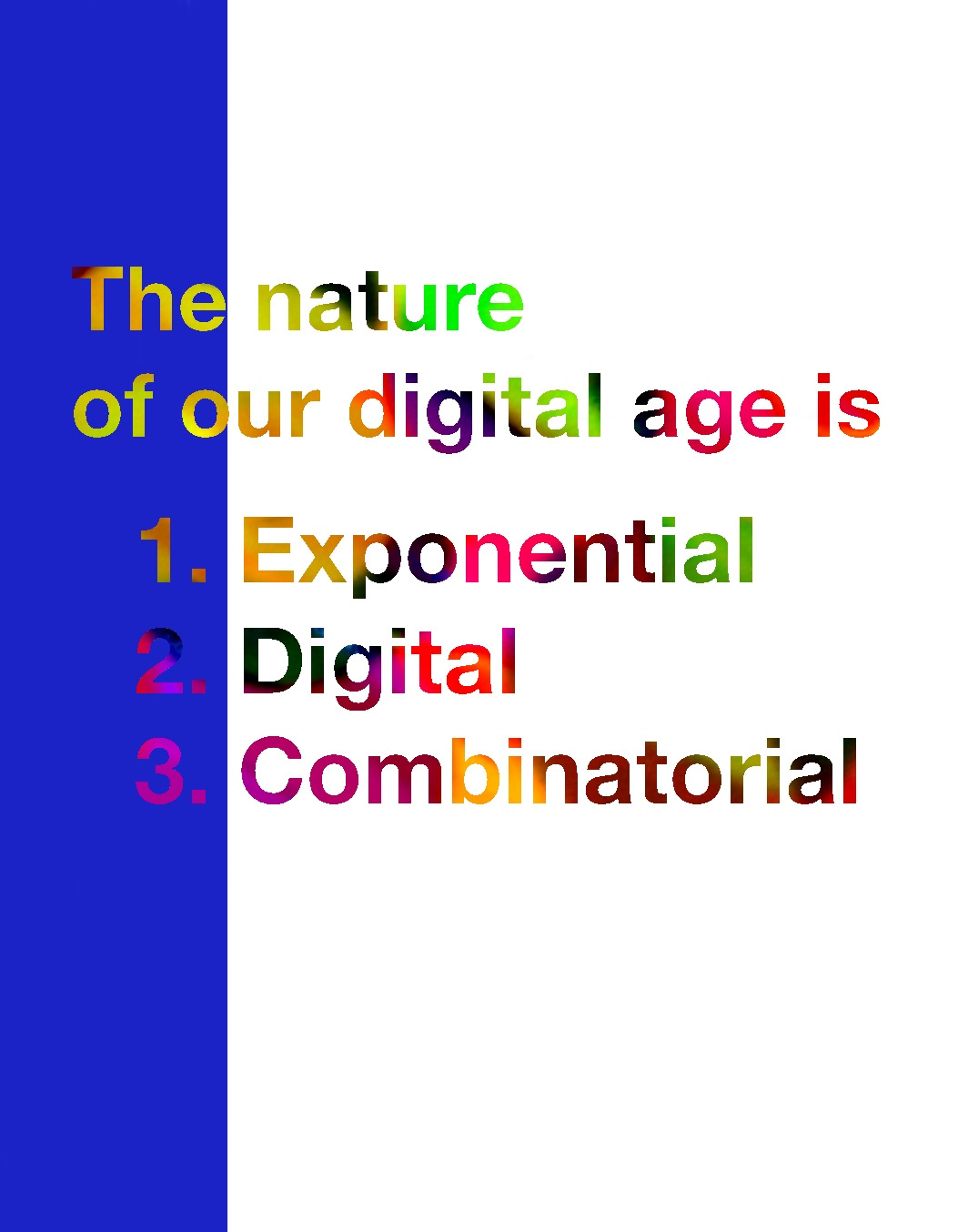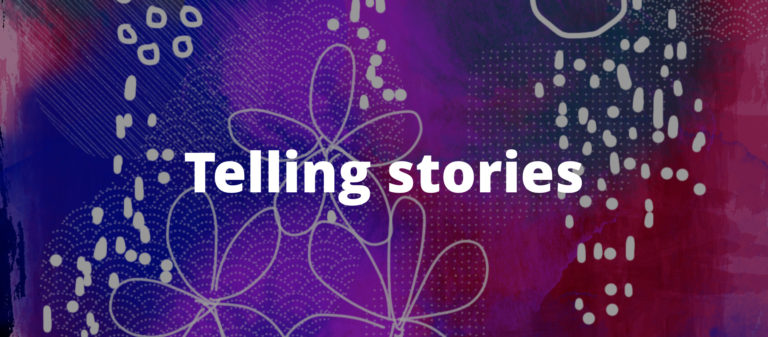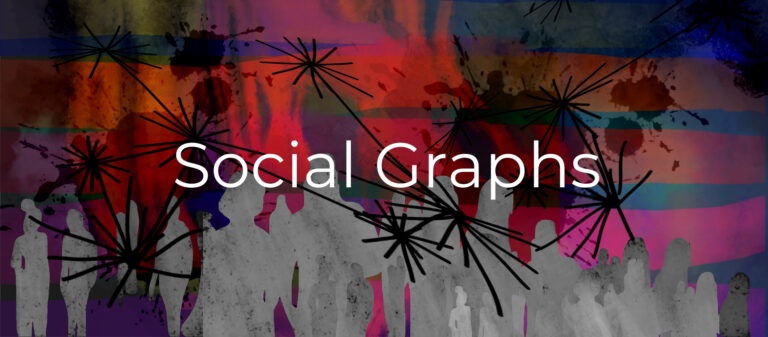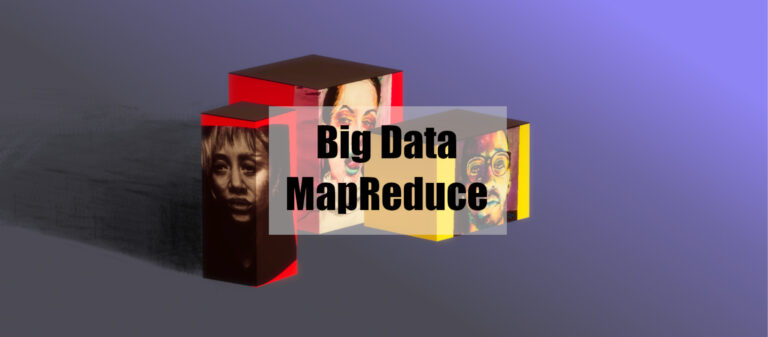Book: The Second Machine Age – prelude before reading the next book

I'm still bounded by flooded roads but I can see some improvements. The tiny way out is still there but those major floods along the main road, around the major highway, and the bayou are still there and blocking my route around town. So I'm still effectively shut in. And we are under water conservation because of flooding damage at the wastewater treatment plant. So no bathing or anything of that manner. And, there is another major storm out there.
I'm scared. I won't rest easy until I know it is not coming here. It really doesn't bear thinking.
We'll see how far I get with tonight's post. I feel like rushing through it because I'm still tired and anxious, but we'll see.
I'm going to talk briefly about the book The Second Machine Age. I will mainly focus on the authors' suggestion on how we can "run with the machines", but there are other materials in the book that are interesting and I want to point them out.
First, the authors contend there are three characteristics of this machine age: 1) it is exponential; 2) it can be digitized; and 3) it is combinatorial.

Well, I thought I would finish last night but it is taking me longer. So, let's try to finish today.
1. Exponential - Chapter 3
The biggie about this machine age is that it is really exponential. Think about that Moore's Law where capability increases and costs decrease by double every 18 months (or something like that). The authors have a really good analogy (or is it metaphor?) of the chessboard. It is based upon some story and goes something like this: put a kernel of rice in the first square of the chessboard. Then in the next square, double that kernel of rice. In each subsequent square, you continue to double the rice. At the end of the first half of the chessboard, the numbers get really large but it is in the second half of the chessboard where numbers are so large that you don't even have a name for it (well, maybe the engineers and scientist do but the layperson doesn't). The authors say that this is where things get really weird. (Maybe kind of like when the atoms' components get very small, the physics become strange - Schrodinger's cat, wave duality, etc.)
Here's a table showing a double in the made up chessboard

2. Digitalization - Chapter 4
Digitalization is basically things can be digitized and once digitized, they assume certain characteristics. Creating that first book, song, or whatever is difficult and costly, but after that the digitized version is easy to copy and distribute. The digitized version is not consumed; it can be used again and again. And multiple people can use the digitized version at the same time. These characteristics had an impact on the book industry, the music industry, and the film industry, just to mention a few. It looks like anything can be digitized. 3D Printing can't happen unless you are able to digitize the instructions for making things, but once you have the digital entity and the instructions for making, anybody can make it as long as they have the printer.
More and more things will be digitized with potentially more disruptions.
3. Combinatorial - Chapter 5
Combinatorial simply means that digital inventions can be combined with other inventions: hardware plus software plus network type of combinations. There may be other types of combinations but that is the one that comes to my mind (without re-reading the chapter).
Internet of things would be combinatorial because we would be combining hardware technologies (possibly transistors, nanotechnologies, electrical components) with software (maybe including machine learning or AI) and a broad communications network. To my mind the ultimate extreme end is some kind of bodiless presence (wireless WI-FI) in the air around you taking a pulse from all the sensors and maybe even communicating with you.
But the key thing is that software can be combined with software to create new goods, and possibly cheap goods.
Here's a quote found in this chapter (doesn't speak to the combinatorial aspect of our age but does speak to future problems):
"We are having more fun, in part because of the Internet. We are also having more cheap fun. But we are coming up short on the revenue side, so it is harder to pay our debts, whether individuals, business or governments." Tyler Cowen quote, The Second Machine Age, p 77 in hardback.

The Bounty - Chapters 7 and 8
As Tyler Cowen said, we are having more fun. A lot of things are cheaper or free - think music. This is one aspect of the bounty. The other aspect is that we are more productive. The authors of this book says that what used to take us 40 hours to perform a task in 1950 now takes us 11 hours today (The Second Machine Age, p 99, hardback). The biggest gains in productivity are those who are the heaviest users of IT technology.
One thing about the productivity measures we use today (specifically, the GDP) is that they fail to capture all of the productive gains. Free things just don't show up in the measures but the free things do make our lives better (for some people). Music is supposedly better today and we can search the internet for information that we weren't able to do before.
However, the benefits of this increased productivity is not being shared with the workers. These gains are just not being shared; instead they go to the capital owners or the shareholders.
The Spread - Chapters 9 and 10 (Superstars)
So the dark side of this bounty is the spread: the spread of inequality. We are now in a winner take all environment and this digital age seems to be driving it (personally, I also think it is the financial viewpoint of shareholder value takes primacy over everything - so I think there is a misplaced value system driving it - corporate chieftains, Wall Street, and shareholders are being greedier).
"If the work a person produces in one hour can instead be produced by a machine for $1, then a profit maximizing employer won't offer a wage for that job for more than a $1.
In a free market system, either that worker must accept a wage of $1 or find some new way to make a living.
If a person finds a new way to leverage insights, talents, or skills across 1 million new customers using digital technologies, then he or she might earn 1 million times as much." The Second Machine Age, p. 128, hardcover.
These two chapters hold the most information about the growing wealth disparity between the top 20% and the bottom 80%. The top 20% has basically captured all of the economic gains and possibly have taken some from the bottom 80%. In other words, the bottom 80% lost, especially when they are let go in the name of shareholder value.
The authors say there are 3 kinds of winners: 1) those who hold the capital such as financial, equipment, structures, intellectual; 2) those who have the training, education, experience, skills; 3) and those who are superstars due to special talent and luck.
The superstars are the winners take all. According to the authors, media and entertainment folks, sports figures and lawyers, Wall Street, entrepreneurs and senior executives are in the category of superstars.
There is a whole more but I will leave it at this. The book needs to be read for more insights into this nature of the spread.
So What Do We Do? Mainly chapter 12
Mainly race with the machines. Exactly what that means I think the authors themselves are still struggling. But chapter 12 has an interesting story about how after an IBM computer (I believe Watson) beat a chess master, the game changed then changed. Variations of computer and human teams were started to be formed with some interesting results. A team of all computers or all chess master did not fare as well as a team of a combination of computers and humans. Further, the winners were not always a combo of master chess players and machines; sometimes the winners were average chess players using machines very adroitly to beat teams with chess masters and computers.
So read chapter 12 for some hope and guidance on what may be a way out for us.
First of all, we need to be sure that we are not relying on skills that machines can do so much better: 1) anything with repetitive rules; 2) anything to do with math such as adding, subtracting, multiplying, etc.; 3) anything where computers can be a substitute. You want to develop skills that will complement the computer.
The authors say that the following careers are substitutes: payroll processing, inventory control, factory work, word processing. These are all repetitive jobs.
The technologies that will be augmentative are (for now): big data, analytics, high speed communications, and rapid prototyping.
You will need to know how to use the computer or software to your advantage. To use everyday examples to explain how I understand this, most people use Excel to mostly collect, add and subtract. People don't use Excel to generate insight via pivot tables/charts or use Excel to program repetitive actions so you have time to do analysis. They don't use Excel to create processes or products that will aid the business.
In other words, most people don't stretch the tools beyond the obvious routine.
The chess story highlights the importance of generating good new ideas. It was the ideation plus the computing power that drove the average players to success (I think). Or "human strategic guidance combined with tactical acuity of a computer was overwhelming." Since most people don't know what strategic guidance would be (I would like to know what that looks like), the authors talked about ideation instead. But the average chess players knew how to use the computers to their advantage.
So, we need to know how to use the tool and stretch beyond the obvious use. And we need to be able to generate ideas.
There is also the concept of asking the right questions. Computers just answer the questions but they don't generate the interesting questions, so employers will be looking at those who can asks the interesting questions to start generating insights.
So ideation, creativity, innovation, being able to use the digital tools, generating interesting questions.
The authors also talk about pattern recognition and complex communications. Computers are great at pattern recognition because it can assess a greater store of data than us humans, but they do it in a narrow frame. We humans have a wider frame - we use all of our senses to make sense of the world so our frame is wider. This kind of goes hand in hand with the concept of small data (There is a book on Small Data) - data that is not captured by computers. The complex communications I'm a little vague on but I believe it is not just the speech itself but all of the other variables such as empathy and visual cues. Computers would have to be programmed to assess all of these details and they are not there yet (and I hope never will).
Finally, we are going to have to learn how to learn using the concept of self-directed learning. We are going to have to be flexible so that when new opportunities come up, we can learn about them and possibly move toward the new opportunities.
This is the gist of what I got out of chapter 12. All of this seems vague but then nobody knows what skills we will need. So all they can prescribe is rough generalities as pointers. I left out a lot of materials in chapter 12 so get the book to read the details to get a better understanding.
And now I'm done with this post.






